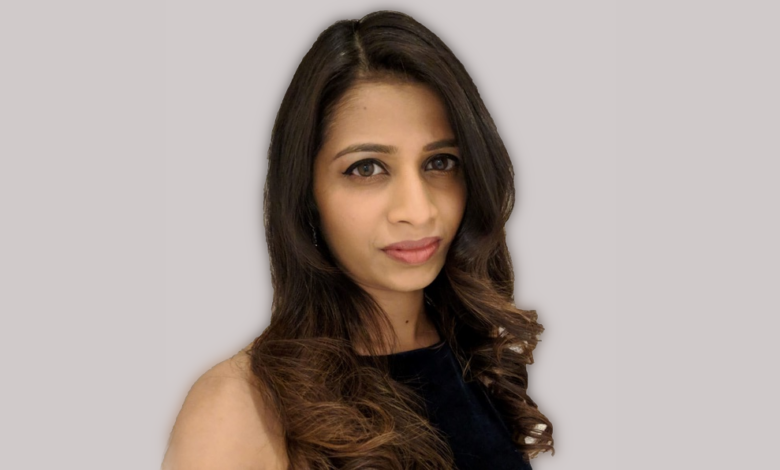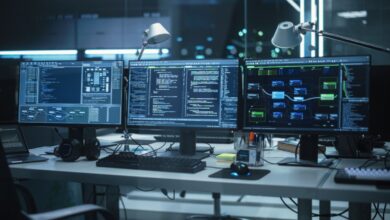Priti Mhatre on How Artificial Intelligence is Really Changing Production

When the generative AI hype machine hit the world, Hogarth, WPP’s production unit, was braced and ready. Machine learning and algorithmic creation were already tools used in areas like VFX, and all sorts of everyday apps were powered by AI. Hogarth was making connections with the Microsofts and Adobes and Nvidias driving the revolution, and they’d even sent a cohort of leaders to Oxford University to learn about AI and business. In 2021, WPP acquired Satalia, a leading market-leading AI solutions company.
Then, in November 2022, ChatGPT hit.
AI was no longer an opaque and distant technology. It had an easy interface. It was in the hands of everyone, from students looking to avoid writing their essays to parents trying to plan their weekly meals. And in the worlds of marketing generally and content production specifically, artificial intelligence promised a whole new (and kind of scary) revolution.
While, yes, there is a lot that AI is changing and will change in the marketing production world, according to Hogarth’s managing director of strategic consulting & AI Priti Maetra, the reality on the ground is a bit more nuanced than the aforementioned hype machine would have us believe.
“One of the things that you must have seen is the hype around AI and how AI will completely transform everything. Depending on what source you follow, it will completely take over marketing from 40% to 95%. There’s a huge variance depending on who you speak to. But I think the biggest change in perception is yes, AI can do a great creative… but will it do the exact, precise creative you need? And that’s where the difference lies. As production we need to do exactly what is required and is legally compliant and has the right copyright. There are a lot of details that go into production beyond the creative ideation front.”
In a space that Priti describes as ‘uncharted territory’, clients are hungry for guidance. There’s a lot of collaboration between client and WPP legal and ethical teams to tackle the age-old problem of ‘just because you can, doesn’t mean you should’. There are ethical challenges around things like creating AI humans as well as the moral and legal conundrums around open-source AI platforms that scrape other artists’ and businesses’ IP straight from the internet. (That’s why, says Priti, most clients are not allowed to use Midjourney, instead using tools like Firefly or Getty’s gen AI creator trained on their own images.)
“It’s a spectrum in terms of how creative, how risk-averse clients want to be versus what they are trying to go for,” says Priti. “ I think every client has a different sweet spot of what they’re allowed to use versus what they’re ready to use and that’s a process in itself.”
From the outside, it looks like someone like Priti is trying to fly an aeroplane while building it, such is the speed of AI development. That’s certainly a challenge, but it’s less intense than one might imagine. “By the time we establish and evaluate a model for this, it’s already changed or there’s something else that’s completely changed. But I think beyond what’s out there in the industry around ‘here’s a new model launching around what’ publicly available’ versus what’s legally compliant, there’s a very short list of models to be used. And that isn’t changing as fast as you would expect.”
With close relationships with major players like Nvidia, OpenAI and Microsoft as well as their own internal development capabilities at Satalia, Priti and the Hogarth team do have something of a clearer view of the road ahead. Under WPP CEO Mark Read and Hogarth CEO Richard Glasson, there is a huge focus on partnerships. And they are two-way partnerships – while the AI giants have unsurpassed R&D capabilities, Hogarth (and WPP) are bringing their wealth of experience about the intricacies and legalities of content production as well as their knowledge about the needs of different clients, markets and channels. “So it’s really a match made in heaven,” says Priti.
At Hogarth there’s almost two streams of AI projects – those exploratory projects at the pioneering edge of what’s possible, and then there’s the enterprise-grade stuff that’s fit for public-facing work out in the market today.
Right now, internally, one of the big R&D obsessions is texture 3D. While AI has more or less cracked 2D still images, that pesky third dimension is proving trickier to crack. Hogarth and the research team at WPP Satalia are working hard on it and Priti says it’s also an area where their partnerships with Nvidia are incredibly productive.
The recent launch of Sora, the moving image tool from OpenAI, is another case in point. If video follows the same trajectory as still imagery, there’s no doubt that the tech players will be able to address the stability, consistency and control issues that we’ve seen in early trials, not to mention questions about its publicly sourced data set. But for now, it’s very much an experimental tool. “ I think we see a huge gap between what’s plausible content versus what’s delivered against a client’s brief. Production is all about making sure everything is pixel perfect and goes through the right amount of checks.”
A fully automated content supply chain, particularly for mass personalisation of assets, needs a different approach to approvals and checks. It also confronts clients with a reality check when it comes to creative control and what their priorities are for a given activation or campaign.
“You can start to see the way there’ll be both kinds of content production… There are some use cases where creative control isn’t important and getting content fast, almost in real time, is probably more important. Whereas there are use cases, like your big Christmas campaigns where you want creative control and you want the extra, specialised effort to build something truly unique.”
Human judgement in production is still key. “This is specific to the production world where we’re seeing that the biggest challenge in completely automating using AI for clients is there are some subconscious contexts and biases that mean you cannot let AI go wild at the moment and completely use it to eliminate humans from the process. Humans are still very much required to ensure that you’re saying the right thing. The data is biased, people who are training it are biased,” says Priti.
Blending that human judgement with AI – and getting people up to speed generally with their new AI workflows – is a big project. In production, it’s not a one-size-fits-all thing as different areas from VFX to languages will require slightly different skills. Hogarth’s working with WPP’s learning and development team to understand how AI will shape both the organisation, and how it will impact the skills needed in specific areas. However, there’s also an internal WPP platform that is available to everyone to experiment with different AI models in a safe, contained environment.
It’s a democratic approach, Priti explains, and it doesn’t take much to get people to have a go. “Every time a new technology comes, there has been a period of inertia where people are like, ‘no this is not going to change, this is not good enough’. Whereas there’s something about AI that people are drawn to,” she says. “I think people want to explore it, see what’s happening. Whether it’s simply to write your email or to summarise a big document into a few bullet points that you can use for a meeting, we’ve been able to use AI to drive productivity across ideation and simple operational tasks.”
Looking longer term at the kinds of roles we might see in AI-powered production, Priti says that Hogarth will still need key production specialists. For example she suggests that VFX artists may use AI to create a first draft of, for example, a 3D model, that they can then edit and shape. In terms of growing areas, she notes that transformation consulting will increase as clients will need to adjust to their new content supply chains.
Making sure that AI content remains compliant and doesn’t go rogue is another major area that Priti believes will open up. “If everything is automated, how are we making sure we’re doing the right thing? I think content governance becomes an important area, making sure the content is ethically right and creatively compliant,” she says, suggesting we will see more AI ethicists and AI content governance specialists in the near to mid term.
As AI automation becomes normalised, Priti says that it is prompting more conversations internally and with clients around remuneration models.
“As we move towards an automated world where content creation is driven by AI, charging by billable hours does not make sense at all. But at the same time, I think this shift will take some years as well because there’s still clients who are still working in traditional ways. There are leaders who are exploring these ways, but still enterprise adoption of AI-led solutions for marketing is relatively low at the moment. Having said that, we’ve managed to build platforms that completely automate content production using AI and that has helped shift the conversations to more subscription-based platforms, to more or less a value-based pricing for some clients while some clients are still on the old set up. I believe both will co-exist but there is a shift.”
What’s also shifting, from a client perspective, is that there’s a more sober attitude towards AI compared with the flurry of excitement from the past few years. “We spent a lot of time last year doing pilots for clients because they want to see what AI can do. This year, we’ve seen a shift where clients want to understand the ROI of AI, trying to understand the enterprise adoption of AI. How can they build this at an enterprise scale? How do you set up these language models and diffusion models in a safe environment? How do you fine tune these models rather than just using the standard off-the-shelf model?,” explains Priti.
Digging into this nuanced picture of AI and how it is and isn’t yet changing workflows, supply chains and client relationships, Priti’s in the perfect position to answer that one big question that has been niggling away in the minds of many of us, whether we work in production or not. Is the disruption we’re seeing (or yet to see) from AI really any different to new tech revolutions in years gone by, like the advent of CGI or desktop publishing?
“We spend a lot of time debating this internally as well. Like is this just the next Photoshop? Is it just ‘adopt a new tool and you’ll be fine, it’ll just look slightly different’, versus something fundamental,” says Priti. “I certainly believe, having spent the last 18 months deep-diving into everything and the impact of AI, that this is fundamentally different.”
Even when she’s on leave, outside the office and not thinking about production or transformation in the slightest, she can’t escape the buzz of AI. Just recently she was on a hike with a group who were all debating the pros and cons of AI – and then passed another group having exactly the same discussion. It truly is, says Priti, general-purpose tech, as all-encompassing as the advent of the internet or electricity. And while, yes, there’s a lot of overexcited hype around, in the world of content production we’re already seeing a wealth of new opportunities and challenges open up ahead.



